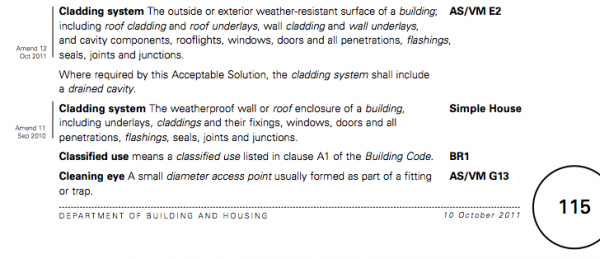The new requirements apply to commercial and multi-unit buildings. Single houses and low rise multi-unit dwellings are exempt. Previously, buildings up to 25m high or those with sprinkler protection required no testing of external cladding material. Amendment 4 of Acceptable Solutions C/AS2-7 removes this dispensation, so all cladding for buildings over 7m high requires a fire test.
The Amendment references the "building height is defined as the vertical distance between the floor level of the lowest occupied space above the ground and the top of the highest occupied floor, i.e. the roof level. If a building height exceeds 7m to the roof then combustible cladding cannot be used anywhere on the building. This is because cladding burning at height creates a hazard for both escaping occupants and fire-fighting operations. Several high-profile fires in Melbourne and Dubai highlighted the risk of combustible external cladding material on high-rise buildings."
It is important to understand that the new requirements apply to the whole exterior cladding system including cladding, underlays, cavity components (including battens), windows, doors and all penetrations, flashings, seals, joints and junctions. The testing requirement applies to all components within the cladding system.
For a definition of a cladding system, reference the definition in the Building Code Handbook (Pg 115)

The Building Code Handbook (page 115)
A number of common cladding materials are considered non-combustible so will meet the new requirements without testing. Concrete, masonry (brick/block), ceramic tile, aluminium, glass, steel and fibre cement with applied finishes less than 1mm thick fall into this category. However, timber products without a fire retardant will usually not meet the requirements.
Read the full explanation including test requirements on the MBIE website




























 Most Popular
Most Popular Popular Products
Popular Products


